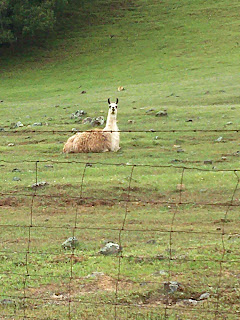About the time I started hearing of the new Coronavirus, it had not rained in Northern California in thirty-eight days. It was the driest February since record-keeping began, and since we had endured three straight Octobers of devastating wildfires in our state, Californians were very hopeful for a wet March. By the time we got our wish in early March, Nature was busy doing what it does every Spring: rebirth. The hills turned a dazzling green, wildflowers came up in culverts and between the grape vines in the vineyards, and hummingbirds dove down to partake. Nubile green shoots that would soon be freesia or daffodils poked through the soil, and the narcissus and hyacinths were in full flower beckoning to be sniffed. The fruit trees were budding, and cascades of sunny yellow puff balls were already spilling from the Acacia. Passing beneath, you could hear the hum of the bees taking advantage. Little did any of us know that two weeks into the month, a pandemic would be raging around the globe.
On March 19th, all non-essential businesses in California, including the flower shop where I worked, were ordered to close and we were told to shelter in place. I felt extremely fortunate to have a space with a garden and a backyard where I hole up, a place I had made a haven over the thirty years I have lived here.
If there is one thing I have learned from this crisis, it is that the environment truly does thrive when humans step back. Photos from Nasa show our own for probably the first time in over a century, planet not enshrouded in smog. And while there were no dolphins in the Venice canals as one doctored photograph proclaimed, I have definitely seen a resurgence of wildlife in my own vicinity. Right by a road that is usually lined with bumper to bumper traffic, I stopped to watch a Tom turkey, his face electric blue with excitement, doing a mating dance for three undecided hens, fanning his impressive tail feathers and strutting hopefully back and forth in front of them. The first week of the shelter at home order, Californians were so desperate to be in the outdoors, that we descended upon beach and forest in multitudes, making it impossible to keep a distance of six feet from others of our species. A few days later, all state parks were closed, and soon, to rein in the disobedient, their parking lots too.
I think many humans are starved for a connection with Nature. We are clumsy at feeding this need, trampling the very wildflowers we longed to see in a desert super bloom, grabbing onto tortoises while snorkeling, harming them in our need for contact, taking selfies with bear and moose and other creatures that are wild and do not play by our rules. We see beautiful rocks and petroglyphs on cliffs in Utah and want to take a chip home. We marvel at groves of Aspen in Colorado, and carve our names in their bark. The signs seen in many of our most wild places read “Leave nothing but footprints. Take nothing but photos. Kill nothing but time.” And yet our sheer numbers and lack of a true understanding that when we visit wild places, we are visitors in the home of other species, species equally as important as we bipeds. Maybe this time-out for humans will teach us that we are only one part of life on this shared planet, not the main event.
This shelter-at-home period has forced me to slow down and see all of this play out in the microcosm of my back yard, to notice more. I witness the day to day changes in the plants and creatures there, the intensifying color on the house finches, the lilting, descending notes of the golden-crowned sparrows. As one flower fades, another is just starting. Yesterday, I hung string on the fenceposts for the birds to use as nesting material and was ridiculously thrilled to see a bird fly by today with a piece in its beak. Connection. Cooperation. A future.
Time has become fuzzy and like many, I have to think hard to recall what date it is or when something took place. The only constant is the season. Some have pointed out the irony that Spring is in its full glory when so many are sick and dying, when the words apocalypse and Armageddon are heard frequently on the news. But I am not of the April-is-the-cruelest-month camp. In a time of so many harsh realities and the anxiety of having very little control beyond handwashing and social distancing, I find tremendous comfort in the ongoingness of Nature. In this period of giant unknowns, with our understanding of the virus changing daily, there is solace in the fact that, undisturbed and left to its own devices, the natural world continues, even flourishes. It can manifest in something as small as a weed growing from a crack in a city sidewalk, or as recognizable as a Cherry Blossom tree snowing petals. The Oriels are back now, their dazzling yellow bringing me to tears of delight watching them cautiously dine at the jelly feeder. There is reassurance in being able to count on something, to witness the world outside as it continues, carrying out its seasonal rituals of life and death as it has done for over 130 million years. The natural world can be an antidote to panic, if we are only able to appreciate that humans are a part of all the wonder, but certainly not the only part that matters.





No comments:
Post a Comment